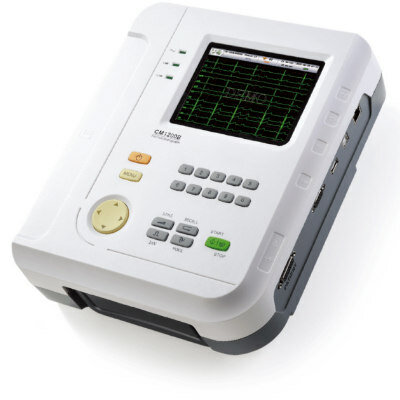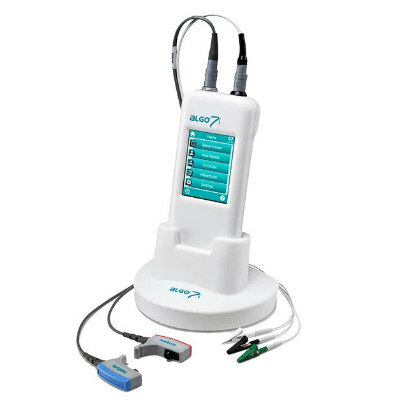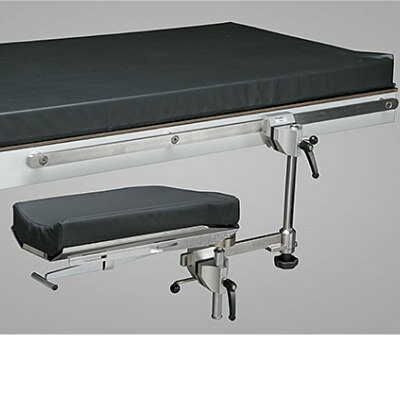GE Healthcare Launches First X-Ray AI Algorithm to Help Assess Endotracheal Tube Placement for COVID-19 Patients
|
By HospiMedica International staff writers Posted on 24 Nov 2020 |

Illustration
GE Healthcare (Chicago, IL, USA) has launched a new artificial intelligence (AI) algorithm to help clinicians assess Endotracheal Tube (ETT) placements, a necessary and important step when ventilating critically ill COVID-19 patients.
The AI solution is one of five included in GE Healthcare’s Critical Care Suite 2.02, an industry-first collection of AI algorithms embedded on a mobile x-ray device for automated measurements, case prioritization and quality control. Research shows that up to 25% of patients intubated outside of the operating room have misplaced ETTs on chest X-rays, which can lead to severe complications for patients, including hyperinflation, pneumothorax, cardiac arrest and death. Moreover, as COVID-19 cases climb, anywhere from 5-15% require intensive care surveillance and intubation for ventilatory support.
Up to 45% of ICU patients, including severe COVID-19 cases, receive ETT intubation for ventilation. While proper ETT placement can be difficult, Critical Care Suite 2.0 uses AI to automatically detect ETTs in chest X-ray images and provides an accurate and automated measurement of ETT positioning to clinicians within seconds of image acquisition, right on the monitor of the x-ray system. In 94% of cases, the ET Tube tip-to-Carina distance calculation is accurate to within 1.0 cm. With these measurements, clinicians can determine if the ETT is placed correctly or if additional attention is required for proper placement. The AI generated measurements - along with an image overlay - are then made accessible in a picture archiving and communication systems (PACS).
Improper positioning of the ETT during intubation can lead to various complications, including a pneumothorax, a type of collapsed lung. While the chest X-ray images of a suspected pneumothorax patient are often marked “STAT,” they can sit waiting for up to eight hours for a radiologist’s review. However, when a patient is scanned on a device with Critical Care Suite 2.0, the system automatically analyzes images and sends an alert for cases with a suspected pneumothorax - along with the original chest X-ray - to the radiologist for review via PACS. The technologist also receives a subsequent on-device notification to provide awareness of the prioritized cases. To make the AI suite more accessible, Critical Care Suite 2.0 is embedded on a mobile X-ray device - offering hospitals an opportunity to try AI without making investments into additional IT infrastructure, security assessments or cybersecurity precautions for routing images offsite.
“The pandemic has proven what we already knew - that data, AI and connectivity are central to helping those on the front lines deliver intelligently efficient care,” said Jan Makela, President and CEO, Imaging at GE Healthcare. “GE Healthcare is not only providing new tools to help hospital staff keep up with demand without compromising diagnostic precision, but also leading the way on COVID-era advancements that will have a long-lasting impact on the industry, long after the pandemic ends.”
“In several COVID-19 patient cases, the pneumothorax AI algorithm has proved prophetic - accurately identifying pneumothoraces/barotrauma in intubated COVID-19 patients, flagging them to radiologist and radiology residents, and enabling expedited patient treatment,” said Dr. Amit Gupta, Modality Director of Diagnostic Radiography at University Hospital Cleveland Medical Center and Assistant Professor of Radiology at Case Western Reserve University, Cleveland. “Altogether, this technology is a game changer, helping us operate more efficiently as a practice, without compromising diagnostic precision. We soon will evaluate the new ETT placement AI algorithm, which we hope will be an equally valuable tool as we continue caring for critically ill COVID-19 patients.”
The AI solution is one of five included in GE Healthcare’s Critical Care Suite 2.02, an industry-first collection of AI algorithms embedded on a mobile x-ray device for automated measurements, case prioritization and quality control. Research shows that up to 25% of patients intubated outside of the operating room have misplaced ETTs on chest X-rays, which can lead to severe complications for patients, including hyperinflation, pneumothorax, cardiac arrest and death. Moreover, as COVID-19 cases climb, anywhere from 5-15% require intensive care surveillance and intubation for ventilatory support.
Up to 45% of ICU patients, including severe COVID-19 cases, receive ETT intubation for ventilation. While proper ETT placement can be difficult, Critical Care Suite 2.0 uses AI to automatically detect ETTs in chest X-ray images and provides an accurate and automated measurement of ETT positioning to clinicians within seconds of image acquisition, right on the monitor of the x-ray system. In 94% of cases, the ET Tube tip-to-Carina distance calculation is accurate to within 1.0 cm. With these measurements, clinicians can determine if the ETT is placed correctly or if additional attention is required for proper placement. The AI generated measurements - along with an image overlay - are then made accessible in a picture archiving and communication systems (PACS).
Improper positioning of the ETT during intubation can lead to various complications, including a pneumothorax, a type of collapsed lung. While the chest X-ray images of a suspected pneumothorax patient are often marked “STAT,” they can sit waiting for up to eight hours for a radiologist’s review. However, when a patient is scanned on a device with Critical Care Suite 2.0, the system automatically analyzes images and sends an alert for cases with a suspected pneumothorax - along with the original chest X-ray - to the radiologist for review via PACS. The technologist also receives a subsequent on-device notification to provide awareness of the prioritized cases. To make the AI suite more accessible, Critical Care Suite 2.0 is embedded on a mobile X-ray device - offering hospitals an opportunity to try AI without making investments into additional IT infrastructure, security assessments or cybersecurity precautions for routing images offsite.
“The pandemic has proven what we already knew - that data, AI and connectivity are central to helping those on the front lines deliver intelligently efficient care,” said Jan Makela, President and CEO, Imaging at GE Healthcare. “GE Healthcare is not only providing new tools to help hospital staff keep up with demand without compromising diagnostic precision, but also leading the way on COVID-era advancements that will have a long-lasting impact on the industry, long after the pandemic ends.”
“In several COVID-19 patient cases, the pneumothorax AI algorithm has proved prophetic - accurately identifying pneumothoraces/barotrauma in intubated COVID-19 patients, flagging them to radiologist and radiology residents, and enabling expedited patient treatment,” said Dr. Amit Gupta, Modality Director of Diagnostic Radiography at University Hospital Cleveland Medical Center and Assistant Professor of Radiology at Case Western Reserve University, Cleveland. “Altogether, this technology is a game changer, helping us operate more efficiently as a practice, without compromising diagnostic precision. We soon will evaluate the new ETT placement AI algorithm, which we hope will be an equally valuable tool as we continue caring for critically ill COVID-19 patients.”
Latest COVID-19 News
- Low-Cost System Detects SARS-CoV-2 Virus in Hospital Air Using High-Tech Bubbles
- World's First Inhalable COVID-19 Vaccine Approved in China
- COVID-19 Vaccine Patch Fights SARS-CoV-2 Variants Better than Needles
- Blood Viscosity Testing Can Predict Risk of Death in Hospitalized COVID-19 Patients
- ‘Covid Computer’ Uses AI to Detect COVID-19 from Chest CT Scans
- MRI Lung-Imaging Technique Shows Cause of Long-COVID Symptoms
- Chest CT Scans of COVID-19 Patients Could Help Distinguish Between SARS-CoV-2 Variants
- Specialized MRI Detects Lung Abnormalities in Non-Hospitalized Long COVID Patients
- AI Algorithm Identifies Hospitalized Patients at Highest Risk of Dying From COVID-19
- Sweat Sensor Detects Key Biomarkers That Provide Early Warning of COVID-19 and Flu
- Study Assesses Impact of COVID-19 on Ventilation/Perfusion Scintigraphy
- CT Imaging Study Finds Vaccination Reduces Risk of COVID-19 Associated Pulmonary Embolism
- Third Day in Hospital a ‘Tipping Point’ in Severity of COVID-19 Pneumonia
- Longer Interval Between COVID-19 Vaccines Generates Up to Nine Times as Many Antibodies
- AI Model for Monitoring COVID-19 Predicts Mortality Within First 30 Days of Admission
- AI Predicts COVID Prognosis at Near-Expert Level Based Off CT Scans
Channels
Artificial Intelligence
view channel
AI-Powered Algorithm to Revolutionize Detection of Atrial Fibrillation
Atrial fibrillation (AFib), a condition characterized by an irregular and often rapid heart rate, is linked to increased risks of stroke and heart failure. This is because the irregular heartbeat in AFib... Read more
AI Diagnostic Tool Accurately Detects Valvular Disorders Often Missed by Doctors
Doctors generally use stethoscopes to listen for the characteristic lub-dub sounds made by heart valves opening and closing. They also listen for less prominent sounds that indicate problems with these valves.... Read moreCritical Care
view channel
Deep-Learning Model Predicts Arrhythmia 30 Minutes before Onset
Atrial fibrillation, the most common type of cardiac arrhythmia worldwide, affected approximately 59 million people in 2019. Characterized by an irregular and often rapid heart rate, atrial fibrillation... Read more
Breakthrough Technology Combines Detection and Treatment of Nerve-Related Disorders in Single Procedure
The peripheral nervous system (PNS) serves as the communication network that links the brain and spinal cord to every other part of the body. It consists of two parts: the somatic nervous system, which... Read moreSurgical Techniques
view channel
Hydrogel-Based Miniaturized Electric Generators to Power Biomedical Devices
The development of engineered devices that can harvest and convert the mechanical motion of the human body into electricity is essential for powering bioelectronic devices. This mechanoelectrical energy... Read moreWearable Technology Monitors and Analyzes Surgeons' Posture during Long Surgical Procedures
The physical strain associated with the static postures maintained by neurosurgeons during long operations can lead to fatigue and musculoskeletal problems. An objective assessment of surgical ergonomics... Read more.jpg)
Custom 3D-Printed Orthopedic Implants Transform Joint Replacement Surgery
The evolving field of 3D printing is revolutionizing orthopedics, especially for individuals requiring joint replacement surgeries where traditional implants fail to provide a solution. Although most people... Read more
Cutting-Edge Imaging Platform Detects Residual Breast Cancer Missed During Lumpectomy Surgery
Breast cancer is becoming increasingly common, with statistics indicating that 1 in 8 women will develop the disease in their lifetime. Lumpectomy remains the predominant surgical intervention for treating... Read morePatient Care
view channel
Surgical Capacity Optimization Solution Helps Hospitals Boost OR Utilization
An innovative solution has the capability to transform surgical capacity utilization by targeting the root cause of surgical block time inefficiencies. Fujitsu Limited’s (Tokyo, Japan) Surgical Capacity... Read more
Game-Changing Innovation in Surgical Instrument Sterilization Significantly Improves OR Throughput
A groundbreaking innovation enables hospitals to significantly improve instrument processing time and throughput in operating rooms (ORs) and sterile processing departments. Turbett Surgical, Inc.... Read more
Next Gen ICU Bed to Help Address Complex Critical Care Needs
As the critical care environment becomes increasingly demanding and complex due to evolving hospital needs, there is a pressing requirement for innovations that can facilitate patient recovery.... Read moreGroundbreaking AI-Powered UV-C Disinfection Technology Redefines Infection Control Landscape
Healthcare-associated infection (HCAI) is a widespread complication in healthcare management, posing a significant health risk due to its potential to increase patient morbidity and mortality, prolong... Read moreHealth IT
view channel
Machine Learning Model Improves Mortality Risk Prediction for Cardiac Surgery Patients
Machine learning algorithms have been deployed to create predictive models in various medical fields, with some demonstrating improved outcomes compared to their standard-of-care counterparts.... Read more
Strategic Collaboration to Develop and Integrate Generative AI into Healthcare
Top industry experts have underscored the immediate requirement for healthcare systems and hospitals to respond to severe cost and margin pressures. Close to half of U.S. hospitals ended 2022 in the red... Read more
AI-Enabled Operating Rooms Solution Helps Hospitals Maximize Utilization and Unlock Capacity
For healthcare organizations, optimizing operating room (OR) utilization during prime time hours is a complex challenge. Surgeons and clinics face difficulties in finding available slots for booking cases,... Read more
AI Predicts Pancreatic Cancer Three Years before Diagnosis from Patients’ Medical Records
Screening for common cancers like breast, cervix, and prostate cancer relies on relatively simple and highly effective techniques, such as mammograms, Pap smears, and blood tests. These methods have revolutionized... Read morePoint of Care
view channel
Critical Bleeding Management System to Help Hospitals Further Standardize Viscoelastic Testing
Surgical procedures are often accompanied by significant blood loss and the subsequent high likelihood of the need for allogeneic blood transfusions. These transfusions, while critical, are linked to various... Read more
Point of Care HIV Test Enables Early Infection Diagnosis for Infants
Early diagnosis and initiation of treatment are crucial for the survival of infants infected with HIV (human immunodeficiency virus). Without treatment, approximately 50% of infants who acquire HIV during... Read more
Whole Blood Rapid Test Aids Assessment of Concussion at Patient's Bedside
In the United States annually, approximately five million individuals seek emergency department care for traumatic brain injuries (TBIs), yet over half of those suspecting a concussion may never get it checked.... Read more
New Generation Glucose Hospital Meter System Ensures Accurate, Interference-Free and Safe Use
A new generation glucose hospital meter system now comes with several features that make hospital glucose testing easier and more secure while continuing to offer accuracy, freedom from interference, and... Read moreBusiness
view channel
Johnson & Johnson Acquires Cardiovascular Medical Device Company Shockwave Medical
Johnson & Johnson (New Brunswick, N.J., USA) and Shockwave Medical (Santa Clara, CA, USA) have entered into a definitive agreement under which Johnson & Johnson will acquire all of Shockwave’s... Read more

















